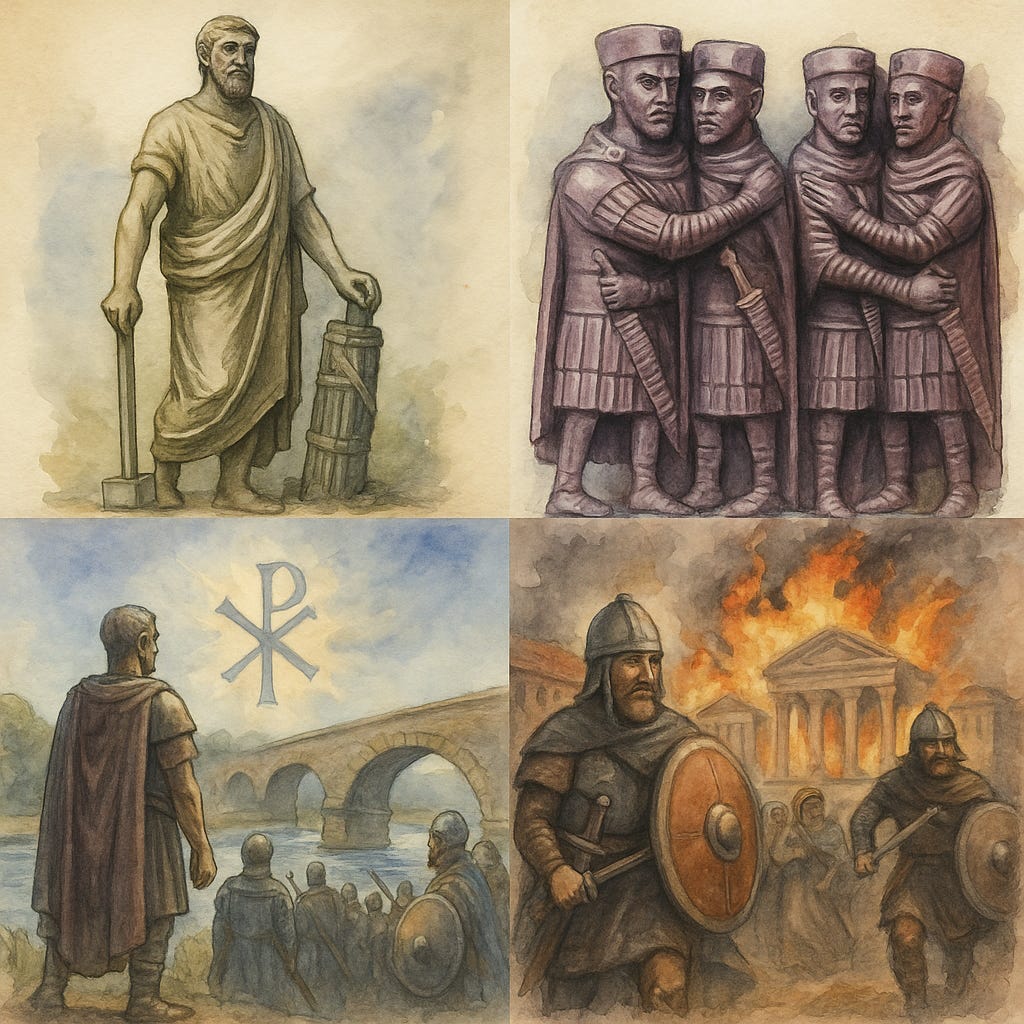Britain’s third-century to early-fifth-century story is framed by a Roman ideal—and its unraveling. We open with Cincinnatus, the farmer-dictator who took power, saved the state, and walked away—a civic restraint later echoed by Washington. It’s a sharp contrast to the Empire’s last act, when emergency powers hardened into habit and the center lost slack.
After the Crisis of the Third Century, Diocletian tries a structural fix. He shares rule (the Tetrarchy), stages the imperial office above everyone else, doubles the provinces and groups them into dioceses, and vastly expands the bureaucracy to count, tax, and supply. Then—remarkably—he abdicates in 305, a planned exit that briefly stabilizes succession.
Constantine inherits that machine from Britain’s doorstep: his father Constantius dies at York in 306, the army acclaims him, and a long civil-war grind ends with sole rule by 324. Along the way come the Milvian Bridge (312) and the Edict of Milan (313), which legalizes Christianity and redirects imperial legitimacy through new channels.
But Britain never stops feeling like a frontier. From Magnus Maximus (383) to a string of usurpers, imperial attention keeps drifting. General Stilicho pulls troops off the island; Constantine III rises; and, with defenses collapsing, Honorius tells the Britons to look to their own protection—around 410, the same year Rome is sacked. Britain is, effectively, on its own.
My one big takeaway: collapse is an ending, but it’s also a handoff. When the center retreats, the peripheries improvise—Britain shifts from a Roman province to a patchwork of post-Roman powers, carrying shards of Roman law, roads, and memory into what comes next.












